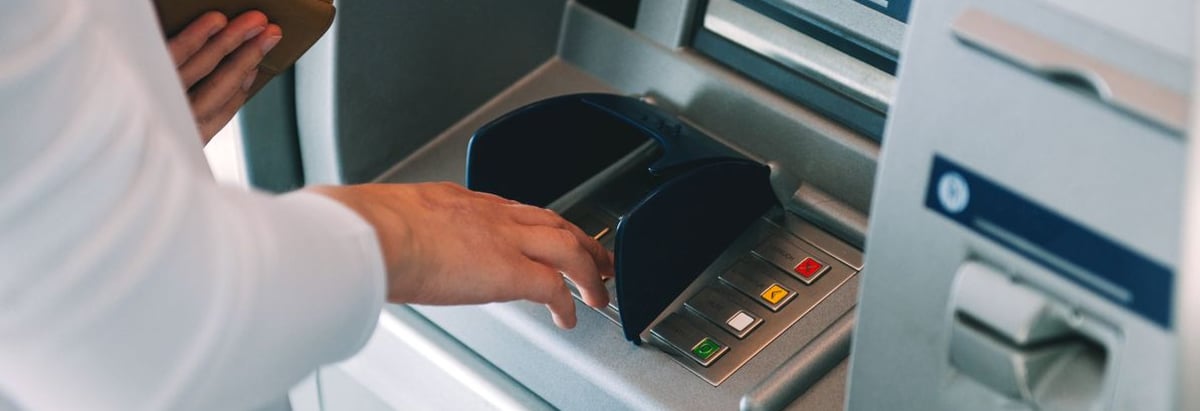Can SpareBank 1 Ringerike Hadeland (OB:RING) Survive The Next Financial Crisis?

SpareBank 1 Ringerike Hadeland’s (OB:RING) profitability and risk are largely affected by the underlying economic growth for the region it operates in NO given it is a small-cap stock with a market capitalisation of ØRE3.19B. Since banks make money by reinvesting its customers’ deposits in the form of loans, strong economic growth will drive the level of savings deposits and demand for loans, directly impacting the cash flows of those banks. After the Financial Crisis in 2008, a set of reforms called Basel III was created with the purpose of strengthening regulation, risk management and supervision in the banking sector. Basel III target banking regulations to improve the sector’s ability to absorb shocks resulting from economic stress which may expose financial institutions like SpareBank 1 Ringerike Hadeland to vulnerabilities. Its financial position may weaken in an adverse macro event such as political instability which is why it is crucial to understand how well the bank manages its risks. Sufficient liquidity and low levels of leverage could place the bank in a safe place in case of unexpected macro headwinds. Today we will be measuring SpareBank 1 Ringerike Hadeland’s financial risk position by looking at three leverage and liquidity metrics. Check out our latest analysis for SpareBank 1 Ringerike Hadeland
Is RING's Leverage Level Appropriate?
Banks with low leverage are better positioned to weather adverse headwinds as they have less debt to pay off. A bank’s leverage may be thought of as the level of assets it owns compared to its own shareholders’ equity. While financial companies will always have some leverage for a sufficient capital buffer, SpareBank 1 Ringerike Hadeland’s leverage ratio of 7x is significantly below the appropriate ceiling of 20x. This means the bank has a sensibly high level of equity compared to the level of debt it has taken on to maintain operations which places it in a strong position to pay back its debt in unforeseen circumstances. Should the bank need to increase its debt levels to meet capital requirements, it will have abundant headroom to do so.What Is RING's Level of Liquidity?
 As abovementioned, loans are quite illiquid so it is important to understand how much of these loans make up SpareBank 1 Ringerike Hadeland’s total assets. Generally, they should make up less than 70% of total assets, but its current level of 86.50% means the bank has obviously lent out 17% above the sensible upper limit. This indicates that revenue is dependent on this particular asset but also the bank is more likely to be exposed to default compared to its competitors with less loans.
As abovementioned, loans are quite illiquid so it is important to understand how much of these loans make up SpareBank 1 Ringerike Hadeland’s total assets. Generally, they should make up less than 70% of total assets, but its current level of 86.50% means the bank has obviously lent out 17% above the sensible upper limit. This indicates that revenue is dependent on this particular asset but also the bank is more likely to be exposed to default compared to its competitors with less loans. What is RING's Liquidity Discrepancy?
A way banks make money is by lending out its deposits as loans. These loans tend to be fixed term which means they cannot be readily realized, conversely, on the liability side, customer deposits must be paid in very short notice and on-demand. The disparity between the immediacy of deposits compared to the illiquid nature of loans puts pressure on the bank’s financial position if an adverse event requires the bank to repay its depositors. Relative to the prudent industry loan to deposit level of 90%, SpareBank 1 Ringerike Hadeland’s ratio of over 144.39% is extremely and unsustainably higher, which places the bank in a very dangerous position given the high liquidity discrepancy. Basically, for NOK1 of deposits with the bank, it lends out over NOK1.20 which is unjustifiable.Next Steps:
Keep in mind that a stock investment requires research on more than just its operational side. There are three relevant aspects you should further examine:
- Future Outlook: What are well-informed industry analysts predicting for RING’s future growth? Take a look at our free research report of analyst consensus for RING’s outlook.
- Valuation: What is RING worth today? Has the future growth potential already been factored into the price? The intrinsic value infographic in our free research report helps visualize whether RING is currently mispriced by the market.
- Other High-Performing Stocks: Are there other stocks that provide better prospects with proven track records? Explore our free list of these great stocks here.
If you're looking to trade SpareBank 1 Ringerike Hadeland, open an account with the lowest-cost platform trusted by professionals, Interactive Brokers.
With clients in over 200 countries and territories, and access to 160 markets, IBKR lets you trade stocks, options, futures, forex, bonds and funds from a single integrated account.
Enjoy no hidden fees, no account minimums, and FX conversion rates as low as 0.03%, far better than what most brokers offer.
Sponsored ContentNew: Manage All Your Stock Portfolios in One Place
We've created the ultimate portfolio companion for stock investors, and it's free.
• Connect an unlimited number of Portfolios and see your total in one currency
• Be alerted to new Warning Signs or Risks via email or mobile
• Track the Fair Value of your stocks
Have feedback on this article? Concerned about the content? Get in touch with us directly. Alternatively, email editorial-team@simplywallst.com
Simply Wall St analyst Simply Wall St and Simply Wall St have no position in any of the companies mentioned. This article is general in nature. We provide commentary based on historical data and analyst forecasts only using an unbiased methodology and our articles are not intended to be financial advice. It does not constitute a recommendation to buy or sell any stock and does not take account of your objectives, or your financial situation. We aim to bring you long-term focused analysis driven by fundamental data. Note that our analysis may not factor in the latest price-sensitive company announcements or qualitative material.
About OB:RING
SpareBank 1 Ringerike Hadeland
A financial institution, provides various banking products and services to private and corporate customers in Norway.
Solid track record established dividend payer.


